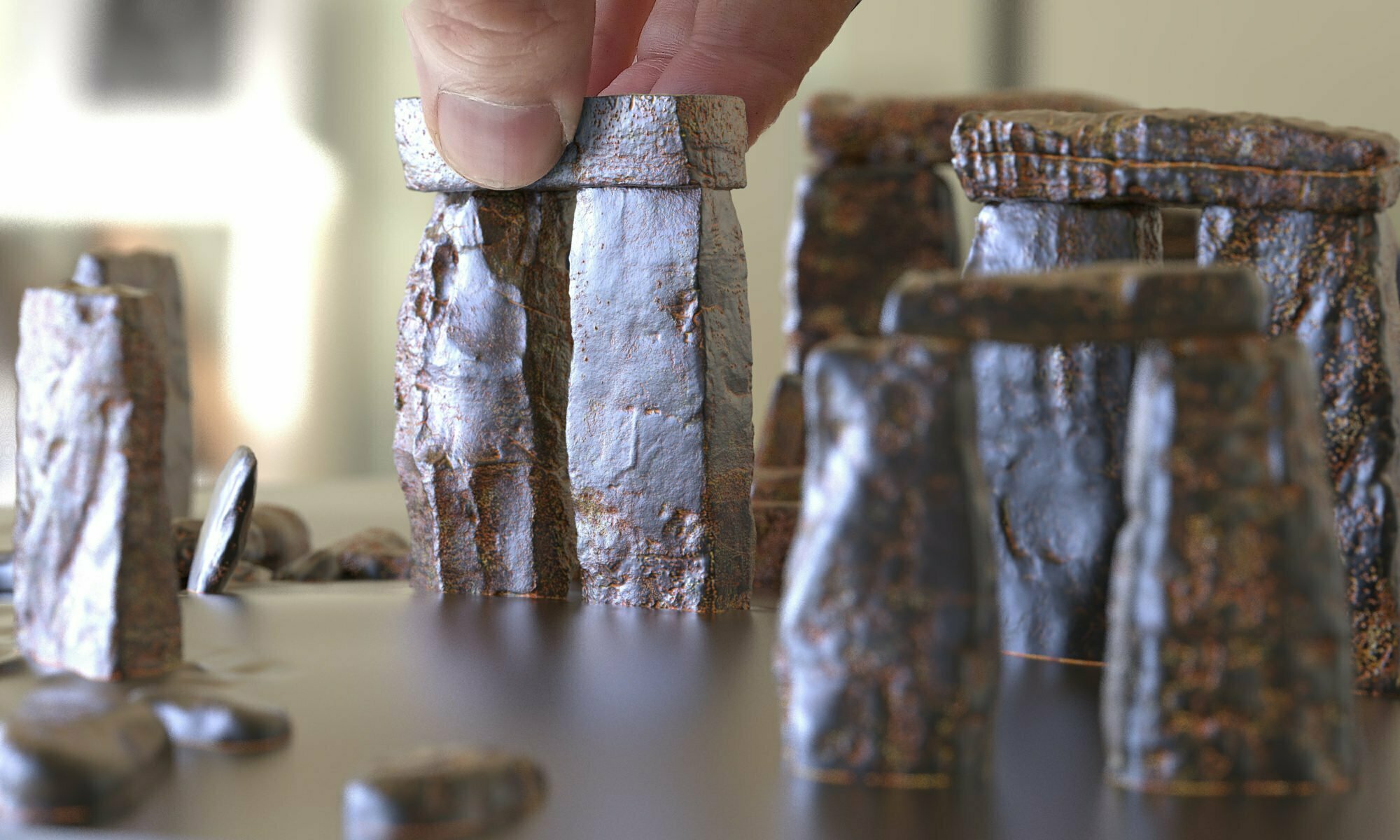Inner flattened faces
Must have been an important part of the ceremonies. To shave off, flat, then polish, must have taken plenty of time. Just using hammer maulstones of sarsen against sarsen, each, an extra durable, with, some would say, an invulnerable toughness of quartz rock. We’ve little idea of the number of people, the time it would take. But if you look at the root of the fallen main, central trilithon, Trilithon Three, S55a. Where there is a lump remaining, above which, is a huge depth of stone that was removed, and this is a rear, outer face. It is clear that shape and finish was important, even though the tools were so crude.
Flattened faces
Bash off a lot, smooth off some more, then grind to a polish. These inward faces of the inner horseshoe of sarsens needed to look good.
Though, polishing is not exclusive to these inner faces, nor these trilithons. There is some on S16, on the base of the SW side of T1’s S52 and outer circle’s S10. But, where the grinding is most noticeable, is on Trilithon Two’s S53 (Skinny). But, it’s only on the lower 6 foot. So, it’s thought that it was done after the stones were erected, perhaps contemporary to the dagger and axes, around early Bronze Age.
All the sarsens, inner and outer faces, outer circle and inner horseshoe were pick dressed, or pock-marked, with small handheld hammerstones of other sarsen, probably just to take off the cruddy ancient outer crust to get at the inner, clean, fresh and white interior.
Orange and purple
Shape and bashing apart, the colour was certainly important to the builders. There is debate over the orange and purple and plain grey sarsens. If indeed, it is a ting. Perhaps in their day, once the top ancient layer were hammered and picked away, colour wasn’t important. It could be they were all a uniform light grey. And, only now after 4,500 of decay, has that orange rust, perhaps tourmaline purple faded up to the surface, once more.
That they mixed orange with purple in a trilithon, could be purposeful or not.
North and south
Fast-forward, 4,500 years and our stones are covered in life. Lichens, mosses, algae and moulds. But, out Trilithon Four’s inner face, is south facing, so dries out when the summer sun burns down directly on to it. So, its flora is more sparse. Compare with Trilithon One and Two’s inner faces. They are a jungle of dank winter colour.

